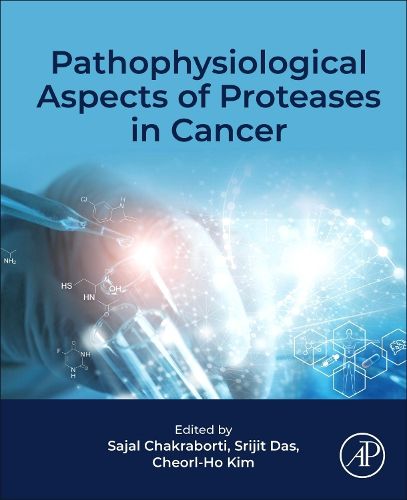Readings Newsletter
Become a Readings Member to make your shopping experience even easier.
Sign in or sign up for free!
You’re not far away from qualifying for FREE standard shipping within Australia
You’ve qualified for FREE standard shipping within Australia
The cart is loading…






Pathophysiological Aspects of Proteases in Cancer provides a comprehensive overview of the multifaceted field of proteases in the cellular environment and focuses on the recently elucidated functions of complex proteolytic systems in physiology and pathophysiology. The book both gives insights on the general aspects of the role of proteases in cancer, their role as diagnostics and prognostics biomarkers, their impact on chemoresistance, and the future cutting-edge technologies like cocktail therapies and Cyber Knife technology. Given the breadth and depth of information covered in the respective contributions, the book will be immensely useful for researchers in oncology and working to identify targets for drug development.
Multidisciplinary in scope, the book bridges the gap between fundamental and translational research, with applications in the biomedical and pharmaceutical industry, making it a thought-provoking read for basic and applied scientists engaged in biomedical research.
$9.00 standard shipping within Australia
FREE standard shipping within Australia for orders over $100.00
Express & International shipping calculated at checkout
Pathophysiological Aspects of Proteases in Cancer provides a comprehensive overview of the multifaceted field of proteases in the cellular environment and focuses on the recently elucidated functions of complex proteolytic systems in physiology and pathophysiology. The book both gives insights on the general aspects of the role of proteases in cancer, their role as diagnostics and prognostics biomarkers, their impact on chemoresistance, and the future cutting-edge technologies like cocktail therapies and Cyber Knife technology. Given the breadth and depth of information covered in the respective contributions, the book will be immensely useful for researchers in oncology and working to identify targets for drug development.
Multidisciplinary in scope, the book bridges the gap between fundamental and translational research, with applications in the biomedical and pharmaceutical industry, making it a thought-provoking read for basic and applied scientists engaged in biomedical research.